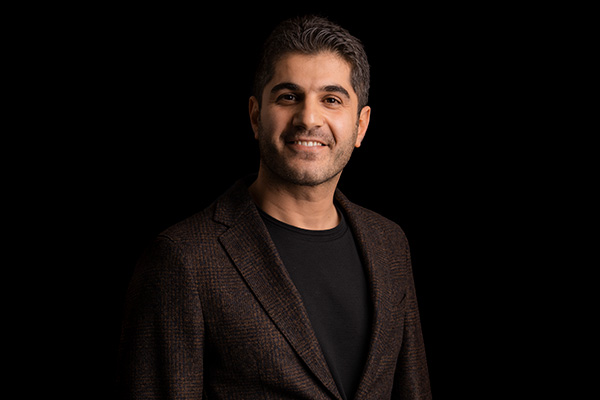Weria Pezeshkian
Research leader

Project title
Coupling Architectures of the Cellular Powerhouse to Energy Production States Using Computational Microscopy
What is your project about?
Mitochondria, the powerhouse of the cell, produce cellular energy parcels from food. These microfactories possess an astonishing and intricate internal architecture that dynamically changes to adapt, for example, to cellular energy demands and metabolic changes. How biomolecules come together and form such intricate architecture is still a mystery. My lab develops state-of-the-art computational microscopy to couple molecular activities to visible biological forms. We use atomistic simulations to capture molecular dynamics at increasing levels of realism and provide dynamic views of molecule movements unmatched by any experimental technique. Moreover, we develop mesoscopic simulations to connect molecular behaviors to macroscopic forms and predict how magnificent mitochondrial shapes emerge from molecular activities.
How did you become interested in your particular field of research?
Perhaps I am influenced and inspired by advice given by my high school teacher that can be translated as “do what you are passionate about, then you will make something that matters.” I am fascinated by biomolecular modeling as it involves all branches of natural science. Following the completion of my bachelor's degree in theoretical physics, I found myself missing the excitement of other fields, such as chemistry and biology. This led me to pursue a master's degree in soft matter physics, where I could incorporate a bit of chemistry and biology into my work, but still was not enough. Eventually, for my PhD, I found my field, "biomolecular modeling" which involves, physics, mathematics, chemistry, and biology. My current project is inspired by many discussions with pioneers in the field of biomolecular modeling and renowned biologists and the fact that I can use my approach to fill in important knowledge gaps.
What are the scientific challenges and perspectives in your project?
Morphogenesis of organelle architectures is a phenomenon that takes place on multiple scales, and there is currently no single computational method that can cover all scales. Atomistic simulations can capture behaviors at the molecular scale. But the system operates as a whole and cannot be reduced to its individual elements. So, we have to find a way to transfer atomistic simulation results into another model i.e., the ”mesoscopic model” to look at the system as a whole. The second challenge arises from the fact that biological systems consume energy constantly, so the physics of non-equilibrium thermodynamics must be applied. However, we still know very little about this part of physics. This project will provide key insights into how our cells organize themselves to function and deliver a computational framework to provide a realistic mechanistic picture of such processes.
What is your estimate of the impact, which your project may have to society in the long term?
Mitochondria and their architecture are essential for human cell biology. For example, they produce cellular energy parcels so that our cells have enough energy to function properly. Numerous neurodegenerative and neuromuscular disorders are associated with mitochondrial dysfunction and abnormal mitochondrial architecture. The decline in mitochondrial quality has also been linked to aging. Therefore, understanding how mitochondria function will open up many new avenues for the development of therapeutic strategies.
Which impact do you expect the Sapere Aude programme will have on your career as a researcher?
Sapere Aude gives me the confidence and the freedom to explore a new paradigm in biophysics. It allows me to expand my team and international collaborations and develop state-of-the-art computational methodologies. Overall, this grant will provide me with a great opportunity to establish a world-class computational research group in Denmark as well as pave the way to receiving international recognition in my research field.
Background and personal life
I was born and raised in a small Kurdish town (Marivan) in the far west of Iran near the border with Iraq. I obtained my master’s degree in physics in Iran. I moved to Denmark in 2011 to pursue my PhD at the University of Southern Denmark. Late in 2018, I moved to The Netherlands to pursue a postdoctoral fellowship. Last year, I returned to Denmark as an assistant professor at the University of Copenhagen. Besides science, I like to study culture and history. My hobbies include watching movies, cooking, hiking, and visiting old towns.
View all research leaders here
Research institution
University of Copenhagen
Research field
Biophysics
City of your current residence
Copenhagen
High school
Marivan
